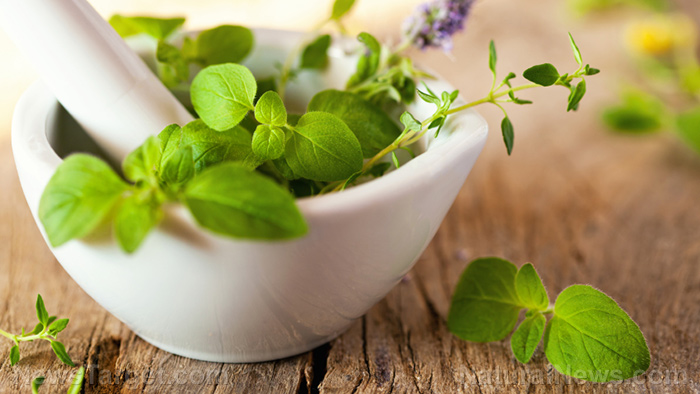
Today, people forage for both food and medicinal herbs. Unlike conventional medicines, medicinal herbs cause very few to no adverse effects, and most of them can also be used in the kitchen. Having a medicine cabinet filled with medicinal herbs could help you and your family in times of need.
Read on to learn how to forage for medicinal herbs for your herbal medicine cabinet. (h/t to Milkwood.net)
Tips for foraging medicinal herbs
Medicine is all around us – in pastures, along streams and within forests – but it takes a trained eye to spot them easily among the foliage. Here are some pointers to get you started:
- Don't pick the first plant you find – Some inedible or toxic plants look like edible ones. For instance, the berries of buckthorns, which are toxic to humans, can be easily mistaken for wild cherries.
- Only harvest plants if there are many of them – Don't pick a plant if it's the only one you can find. Doing so may disturb the environment.
- Harvest only what you need – Even if you find several plants growing in a given area, take only what you need. Leave enough for other foragers, as well as birds, insects and other animals.
- Use all your senses – Don't rely on your eyes alone to correctly identify plants. Learn to tell medicinal herbs by their smell, texture and taste.
- Start with a small sample – Even if an edible herb is considered safe, you never know how your body will react to it. Test it out first by taking a few bites.
- Don't harvest protected or endangered plants – Harvesting protected or endangered plants could be illegal depending on where you live. But even if it's not, it would be in the ecosystem's best interest for you to leave endangered plants alone.
- Don't collect the entire plant – You don't have to dig up the entire plant if you only need its leaves or fruit.
- Don't harvest in polluted areas – Areas along busy roads are exposed to car exhaust and weed killers sprayed by road crews. Streams near factories may also be contaminated with chemicals from industrial waste. Don't forage in polluted areas to minimize your exposure to toxins.
- Harvest only healthy plants – Fungi, pests and pollution can afflict plants. Harvest only healthy plants to minimize your risk of catching an infection from diseased plants.
- Let friends or family know you are foraging – Accidents can happen, so always tell friends or family members where you'll be foraging and when you expect to return.
- Consider following wild herbs through all the seasons – Plants might shed leaves, bear fruit and change color throughout the seasons. It's a good idea to follow herbs and other medicinal plants throughout the seasons so that you know what season-specific characteristics to look for.
Folk herbal recipes
Make your own herbal medicines to include in your medicine cabinet. Here are two recipes you can try.
Spring herb-infused vinegar
Traditionally, herb-infused vinegars are done to extract and preserve the medicinal properties of herbs without the need for alcohol, which is commonly used in tinctures. This makes herb-infused vinegars favorable for regular use for both children and adults avoiding alcohol.
Here's how to make one using nettle, chickweed and dandelion.
Ingredients:
- Chickweed leaves
- Dandelion leaves
- Nettle leaves
- Apple cider vinegar (ACV)
Directions:
- Roughly chop the leaves or pound them using a mortar and pestle.
- Fill a clean, dry jar anywhere from half-full to almost full with the chopped or crushed leaves.
- Add just enough ACV to cover the leaves.
- If the jar has a metal lid, place a piece of parchment paper on top of the jar's mouth before securing its lid to keep the vinegar from eroding the metal.
- Keep the infusion in a cool, dark place for 14 days, shaking it once every day.
- Strain the infusion after two weeks, then pour it into a clean bottle. Label it with the date it was made.
Take a teaspoon of this infusion to lower fever. You can also use it to make dressings or add it to soups, broths and stews.
Fennel-infused herbal honey
As an herbal medicine, fennel can stimulate metabolism, clear phlegm and relieve a dry or moist cough. If used with honey, fennel can be a great natural remedy for colds. (Related: Herbal remedies and soothing teas: Effective natural cures for the common cold.)
Here's how to make fennel-infused herbal honey.
Ingredients:
- Fennel seeds or flowers
- Raw honey
Directions:
- Warm the honey in a warm water bath. Meanwhile, cut, chop or crush the fennel seeds or flowers.
- Fill a clean, dry jar anywhere from half-full to almost full with fennel seeds or flowers.
- Add just enough honey to cover the fennel seeds or flowers. Stir well, then secure the jar's lid.
- Place it by a sunny windowsill for four to eight weeks. Label it with the date it was made.
To ease cold symptoms, add a teaspoon of this fennel-infused honey to your tea. You can also spread it on toast or stir it into oatmeal.
PlantMedicine.news has more articles about other medicinal plants and their health benefits.
Sources include:
Please contact us for more information.





















